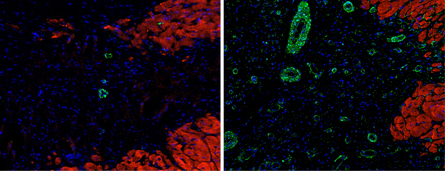

It has chambers and valves constructed from several different types of specialized muscle cells called cardiomyocytes. The heart must beat constantly to pump some 7,000 litres of blood per day without a back-up. The heart is the third most needed organ after the kidney and the liver, with a waiting list of about 3,500 in the United States alone, but it poses extra challenges for transplantation and bioengineering. However, highly constrained polypeptide-based molecular frameworks with cell-permeability properties, such as the cyclotide scaffold, have shown great promise for targeting those biomolecular interactions. Most importantly, they have to work - ideally, for a lifetime. 2 days ago &0183 &32 The selective disruption of proteinprotein interactions remains challenging, as the interacting surfaces are relatively large and flat. regulation of heart rate by cardiac conduction. The new organs must be sterile, able to grow if the patient is young, and at least nominally able to repair themselves. Moreover, we demonstrate that both focal adhesion kinase (FAK) and IQ motif-containing GTPase activating protein 1 (IQGAP1), a scaffold protein for the ERK1/2. Scaffold proteins are crucial regulators of many key signaling pathways. But growing solid organs such as kidneys or lungs means getting dozens of cell types into exactly the right positions, and simultaneously growing complete networks of blood vessels to keep them alive. Researchers have had some success with growing and transplanting hollow, relatively simple organs such as tracheas and bladders (see go./zvuxed). In biology, scaffold proteins are crucial regulators of many key signalling pathways. In the heart, the functional role of scaffolding proteins is an emerging and exciting area of research. In practice, however, the process is beset with tremendous challenges. The functional roles of scaffolding proteins were first identified and elucidated in the nervous system and were subsequently extended into the cardiac field.


 0 kommentar(er)
0 kommentar(er)
